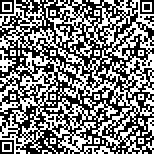本文已被:浏览 1457次 下载 440次
Received:August 24, 2023 Published Online:November 20, 2023
Received:August 24, 2023 Published Online:November 20, 2023
中文摘要: 主动脉瓣狭窄(aortic stenosis,AS)合并冠状动脉粥样硬化性心脏病(coronary artery disease,CAD)在临床中非常常见。经皮主动脉瓣置入术(transcatheter aortic valve implantation,TAVI)是临床上治疗AS的有效方法。因为TAVI具有创伤小和恢复快等优点,在临床中的应用越来越广泛。但是,TAVI术后,因为瓣架或患者自身瓣膜的原因,可能造成冠状动脉造影和经皮冠状动脉介入治疗(percutaneous coronary intervention,PCI)困难。同时,少部分患者因主动脉瓣和冠状动脉开口周边结构的原因,在TAVI术中可能引起冠状动脉急性闭塞而引发严重后果。临床上,对于接受TAVI患者的CAD管理尚不够重视,治疗证据和建议也不统一。因此,本共识就CAD对TAVI患者预后的影响、PCI在TAVI患者中的实施及TAVI术中冠状动脉保护措施等方面的证据进行分析和论述,以期为临床实践提供有益建议。
中文关键词: 主动脉瓣狭窄 冠状动脉粥样硬化性心脏病 经皮主动脉瓣置入术 经皮冠状动脉介入术 瞬时无波形比率
Abstract:Aortic stenosis (AS) combined with coronary artery disease (CAD) is very common in clinical practice. Transcatheter aortic valve implantation (TAVI) is an effective clinical treatment for AS. Due to the advantages of less trauma and faster recovery, the clinical application of TAVI has become more and more extensive. However, after TAVI, coronary angiography and percutaneous coronary intervention (PCI) may become difficult due to the valve frame or the patients valve. Meanwhile, acute occlusion of the coronary arteries may be caused during TAVI with severe consequences in a small number of patients because of the structures surrounding the aortic valve and coronary artery openings. Clinically, the management of CAD in patients undergoing TAVI has not been taken seriously. In addition, treatment evidence and recommendations are not uniform. Therefore, this consensus analyzes and reviews the evidence on the impact of CAD on the prognosis of patients undergoing TAVI, the implementation of PCI in patients undergoing TAVI, and the conduct of coronary artery protective measures during TAVI, with the aim of providing valuable recommendations for clinical practice.
keywords: Aortic stenosis Coronary artery disease Transcatheter aortic valve implantation Percutaneous coronary intervention Instantaneous wave-free ratio
文章编号: 中图分类号: 文献标志码:A
基金项目:国家自然科学基金面上项目(82371573);广东省自然科学基金资助项目(2020A1515011237)
| Author Name | Affiliation |
| 广东省医学会心血管病学分会介入心脏病学组,海南省医学会心血管病专业委员会 |
| Author Name | Affiliation |
| 广东省医学会心血管病学分会介入心脏病学组,海南省医学会心血管病专业委员会 |
引用文本:
